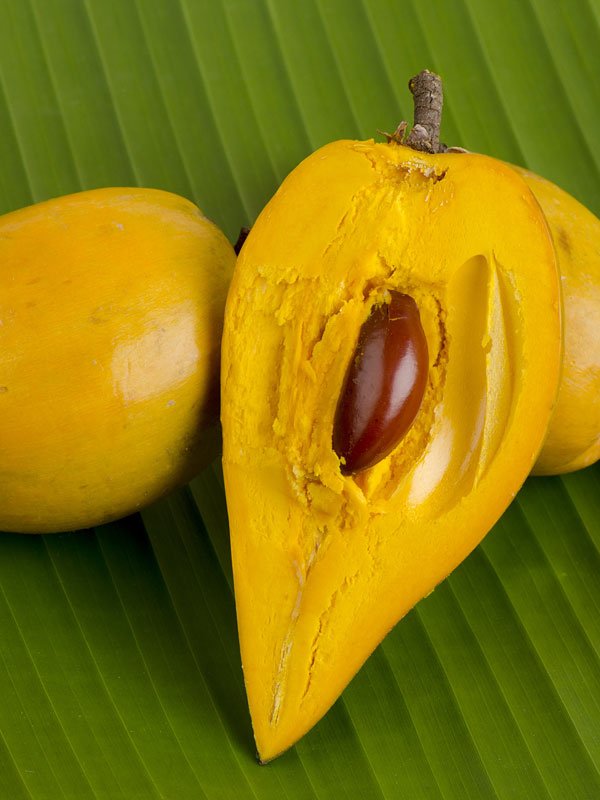Pouteria campechiana
CANISTEL, EIFRUCHT
Englische Bezeichnung: Canistel
Spanische Bezeichnung: Canistel, Mante, Zapote Amarillo
Familie
Sapotengewächse (Sapotaceae)
Verwendbare Teile:
Frucht
Hauptbestandteile:
Mineralstoffe: Eisen, Niacin
Vitamine: B-Vitamine, C, Beta-Carotin (Provitamin A)
Sekundäre Pflanzenstoffe: Antioxidantien
Ernte-Hinweise:
Sobald die Eifrucht orangegelb geworden ist kann man sie ernten. Man lässt sie nach der Ernte vor dem Verzehr noch einige Tage nachreifen.
Verwendung:
Obstsalat, Shakes, Smoothies, Desserts, Brotaufstrich, Dip
Das Fruchtfleisch ist nicht sehr saftig und erinnert von der Konsistenz an hartgekochtes Eigelb, weswegen die Canistel auch Eifrucht genannt wird. Die Eifrucht schmeckt süß und hat ein angenehmes Aroma, den manche als das Aroma von Butterstreuseln beschreiben. Die Schale der Canistel wird meistens nicht gegessen, da sie gummiartig schmeckt und einen Belag auf den Zähnen hinterlässt.
Family
Sapotes (Sapotaceae)
Usable parts:
Fruit
Main components:
Minerals: Iron, Niacin
Vitamins: B vitamins, C, beta-carotene (provitamin A)
Secondary plant substances: antioxidants
Harvesting guideline:
As soon as the egg fruit has turned orange-yellow, it can be harvested. Leave them to ripen for a few days after harvesting before eating.
Use:
Fruit salad, shakes, smoothies, desserts, spread, dip
The flesh is not very juicy and its consistency is reminiscent of hard-boiled egg yolk, which is why the canistel is also called egg fruit. The egg fruit tastes sweet and has a pleasant aroma, which some describe as the aroma of butter crumbles. The skin of the canistel is usually not eaten because it tastes rubbery and leaves a coating on the teeth.
Familia
Sapotes (Sapotaceae)
Partes utilizables:
Fruta
Componentes principales:
Minerales: Hierro, Niacina
Vitaminas: Vitaminas B, C, betacaroteno (provitamina A)
Sustancias vegetales secundarias: antioxidantes
Guía de cosecha:
En cuanto el fruto del huevo haya adquirido un color amarillo anaranjado, puede recolectarse. Déjelos madurar unos días antes de comerlos.
Uso:
Ensalada de frutas, batidos, smoothies, postres, para untar, para mojar
La pulpa no es muy jugosa y su consistencia recuerda a la de la yema de huevo duro, por lo que al canistel también se le llama fruta del huevo. La fruta del huevo tiene un sabor dulce y un aroma agradable, que algunos describen como el aroma de la mantequilla desmenuzada. La piel del canistel no suele comerse porque sabe gomosa y deja una capa en los dientes.









































